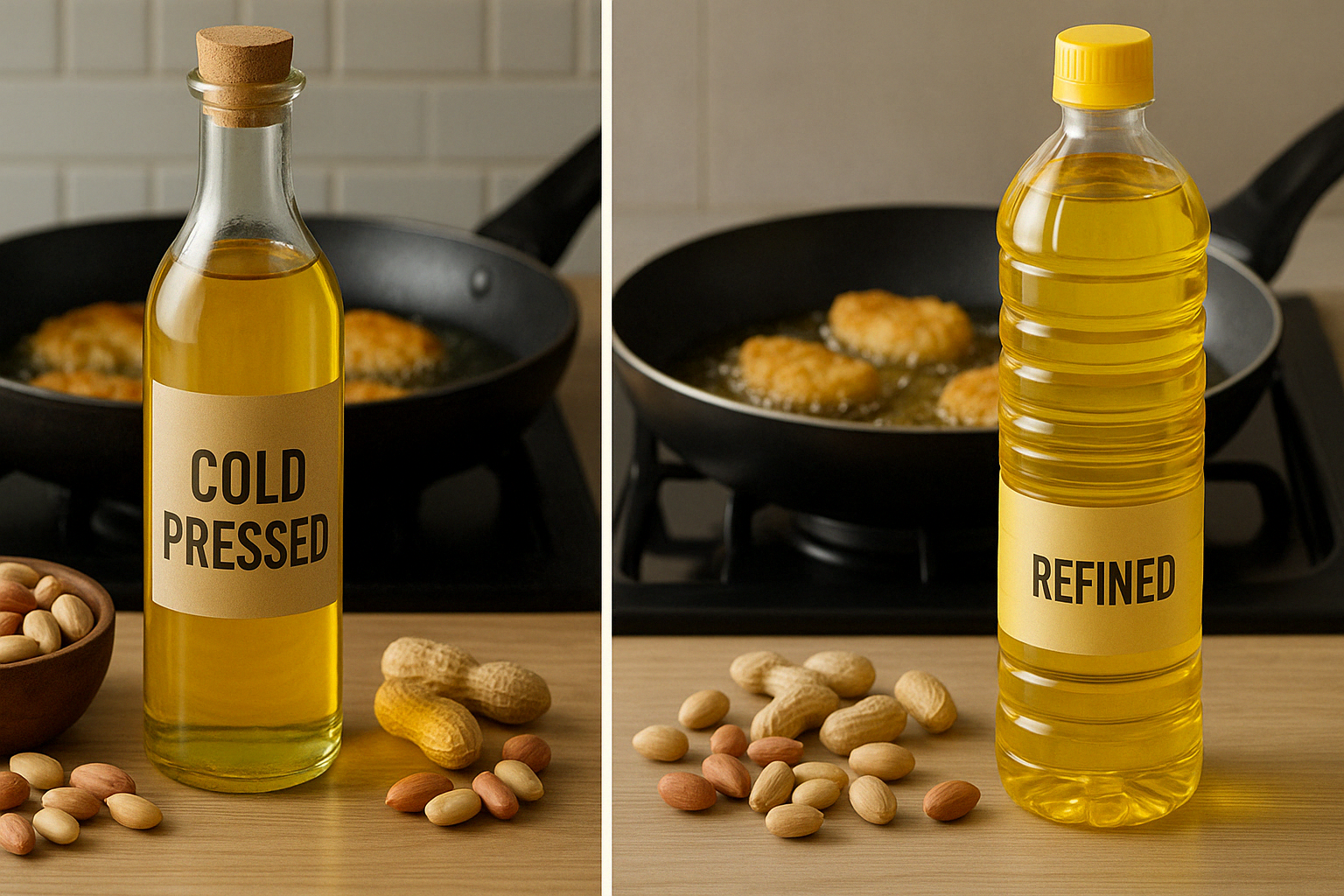Frying makes or breaks a dish. The oil you choose? That’s half the battle won—or lost. With so many options on the shelf, it’s easy to get lost in the details. Labels scream things like “cold pressed,” “refined,” “pure,” and “double-filtered.” And somewhere in that noise, you’re left wondering: cold-pressed groundnut oil vs refined groundnut oil—what’s the real difference when you’re tossing things into a hot pan?
Let’s break it down. No fluff. Just frying facts.
What Does Cold Pressed Mean, Anyway?
Cold-pressing uses a mechanical method to extract oil from groundnuts without heat or chemicals. The oil comes out thicker, darker, and with a stronger aroma. It keeps the natural flavor of the nut intact. That’s a big deal in cooking that needs taste to stand out.
It’s also slower. And yes, pricier. But in return, you get oil that feels closer to the original seed.
Now Let’s Talk Refined Groundnut Oil
This one’s processed at high temperatures. It’s filtered. Cleaned. Neutralized. It’s clear, lighter, and doesn’t smell like much. That’s intentional. Refined oil is made to stay in the background. No interruptions. Just smooth frying with no flavor interference.
You’ve probably used it before without even thinking about it. Most packaged snacks use it. So do restaurant kitchens.
Which One Handles Heat Better?
Here’s where it gets interesting. Refined groundnut oil has a higher smoke point. That means it can handle high heat for longer without breaking down. If you’re deep-frying in big batches, that’s a plus. It stays stable. Doesn’t burn as fast. Doesn’t leave residue.
Cold-pressed oil, on the other hand, has a lower smoke point. It’s better for shallow frying or sautéing. Push it too far, and it starts to break down. That’s not just bad for the dish—it can smell unpleasant too.
So, if you’re planning to fry once a week? Either works. If you’re running a mini samosa factory at home? You might want refined.
What About Flavor?
This is where cold-pressed wins. Every time.
Cold-pressed groundnut oil carries a rich, nutty flavor. It adds character. In dishes like poha, sabzi, or certain curries, it doesn’t just cook—it contributes. You can taste the difference.
Refined oil is neutral. That’s not always a bad thing. Some recipes don’t need added flavor. But if you’re after depth, cold-pressed holds its ground.
Which One Is Easier to Store?
Refined oil usually has a longer shelf life. It’s also easier to store since it doesn’t thicken as easily in colder weather. Cold-pressed oil, if left open or exposed to heat and light, can go rancid faster.
So—airtight containers, dark cabinets, and smaller batches are the way to go with cold pressed.
Price Check?
Refined groundnut oil is cheaper. Mass production, fewer steps, lower shelf price. Cold-pressed is on the premium side. You’re paying for slower extraction and less volume. It’s not always budget-friendly for bulk frying.
So Which One Should You Use?
If you deep fry regularly, refined makes more sense. It’s consistent, clean, and built for high heat. If you cook in small quantities and care about flavor, cold-pressed oil adds value.
You don’t need to pick one forever. Many kitchens use both. Cold-pressed for finishing touches and weekday cooking. Refined for weekend indulgence.
Final Thought
The cold-pressed groundnut oil vs refined groundnut oil debate doesn’t have a universal winner. It depends on how you cook, how often you fry, and how much taste you want your oil to bring to the table.
Choose what works for your style—not just the label. That’s how you win the frying game.




